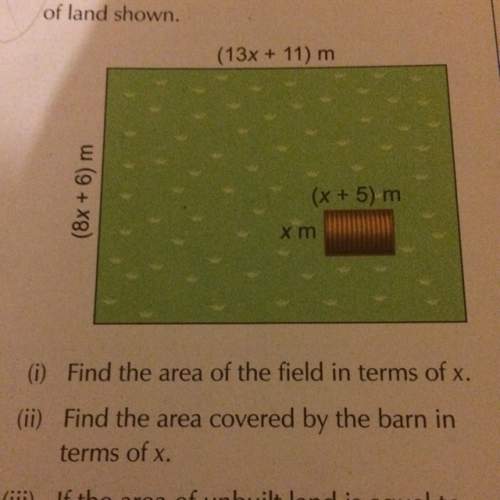
Mathematics, 27.01.2020 23:31 joselinegarciaowyrpf
1. which option did you choose? discuss with another student why you made the choice you made. (1 point)
troposphere (above the surface)upper crust (below the surface)
writing an equation
2. define the variables you will use in your equation. (1 point)
let one variable be the distance away from the surface and the other variable be the temperature.
the y-intercept is the starting position at earth's surface. the coordinates of the y-intercept are (0, temperature at earth's surface).
3. what is the b-value of the y-intercept for your equation? (1 point)
the slope is the rate of change for temperature.
if the temperature increases (gets hotter) as the distance from the surface increases, then the slope is positive.
if the temperature decreases (gets colder) as the distance from the surface increases, then the slope is negative.
4. what is the slope of your equation? (1 point)
5. write an equation that models the relationship between your variables. (1 point)
interpreting the equation
6. identify and explain what each term represents in the temperature model.
a) the slope (1 point)
b) the y-intercept (1 point)
graph the line
7. identify three points on your line. (1 point)
8. using the coordinates from question 7, calculate the slope of your line. does it match the slope from your model? (2 points)
graph the equation
9. on the graph below, plot the points and sketch your line. (4 points: 1 for each graphed point, 1 for the line)
find the temperature range
10. complete the sentence for your layer. (1 point)
the troposphere is the region that starts at earth's surface and ends between km and km above earth.
the upper crust is the region that starts at earth's surface and ends between km and km below earth's surface.
use the temperature equation to find the temperature range for your layer.
11. what is the temperature at the end of your layer that is farthest from the surface? (1 point)
12. for the layer you selected, the temperature ranges from the temperature at earth's surface, to (1 point)

Answers: 1


Other questions on the subject: Mathematics


Mathematics, 21.06.2019 22:00, krandall232
Match the scale and the actual area to the area of the corresponding scale drawing. scale: 1 inch to 4 feet actual area: 128 square feet scale: 1 inch to 7 feet actual area: 147 square feet scale: 1 inch to 8 feet actual area: 256 square feet scale: 1 inch to 5 feet actual area: 225 square feet area of scale drawing scale and actual area scale drawing area: 3 square inches arrowright scale drawing area: 8 square inches arrowright scale drawing area: 4 square inches arrowright scale drawing area: 9 square inches arrowright
Answers: 2

Mathematics, 21.06.2019 22:20, jadenicole908
Igure 1 and figure 2 are two congruent parallelograms drawn on a coordinate grid as shown below: 4 quadrant coordinate grid showing two parallelograms. figure 1 has vertices at negative 5, 2 and negative 3, 4 and negative 4, 7 and negative 6, 5. figure 2 has vertices at 5, negative 2 and 7, negative 4 and 6, negative 7 and 4, negative 5. which two transformations can map figure 1 onto figure 2? reflection across the y-axis, followed by reflection across x-axis reflection across the x-axis, followed by reflection across y-axis reflection across the x-axis, followed by translation 10 units right reflection across the y-axis, followed by translation 5 units down
Answers: 1
You know the right answer?
1. which option did you choose? discuss with another student why you made the choice you made. (1 p...
Questions in other subjects:






History, 02.08.2019 18:30







